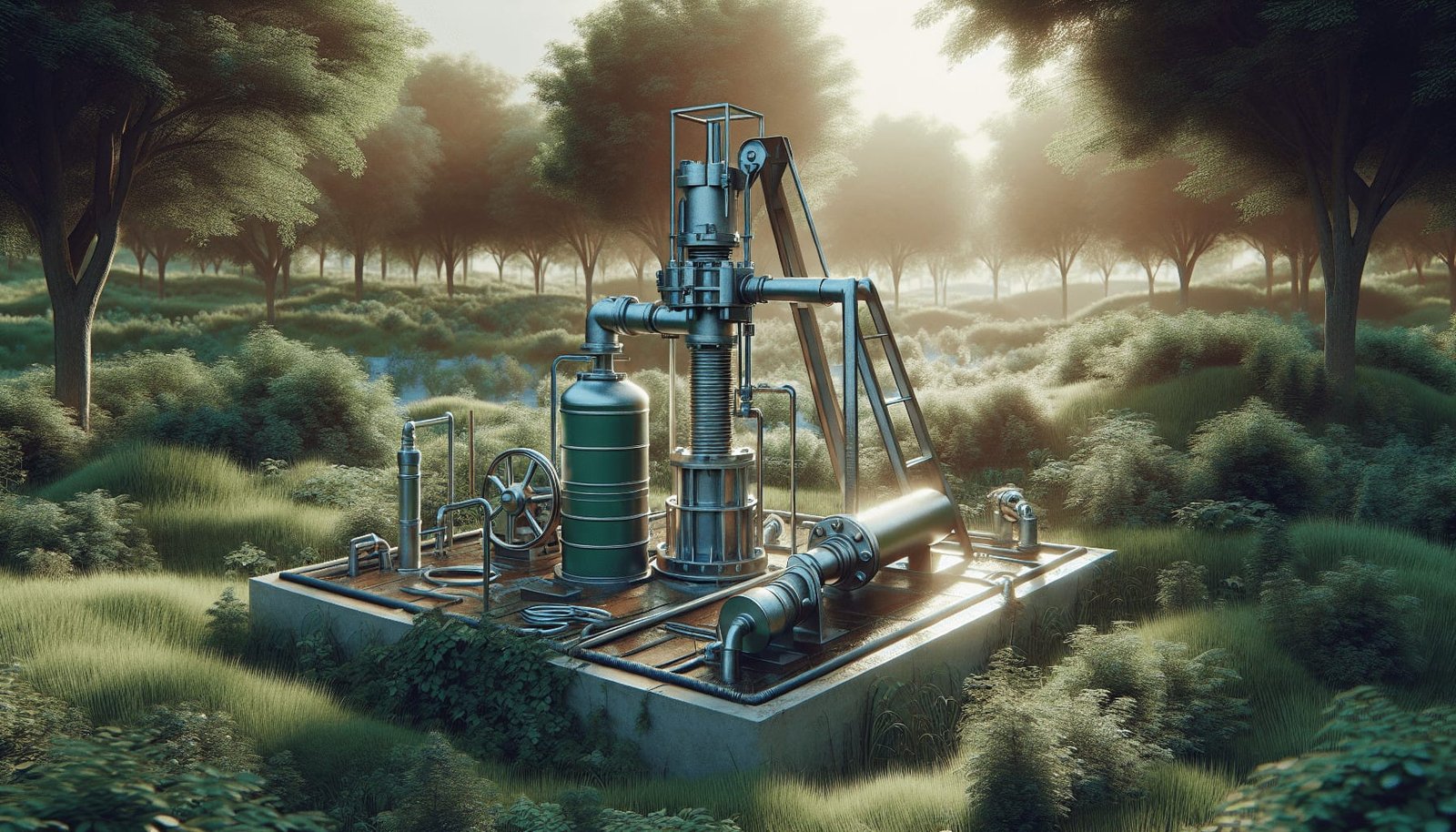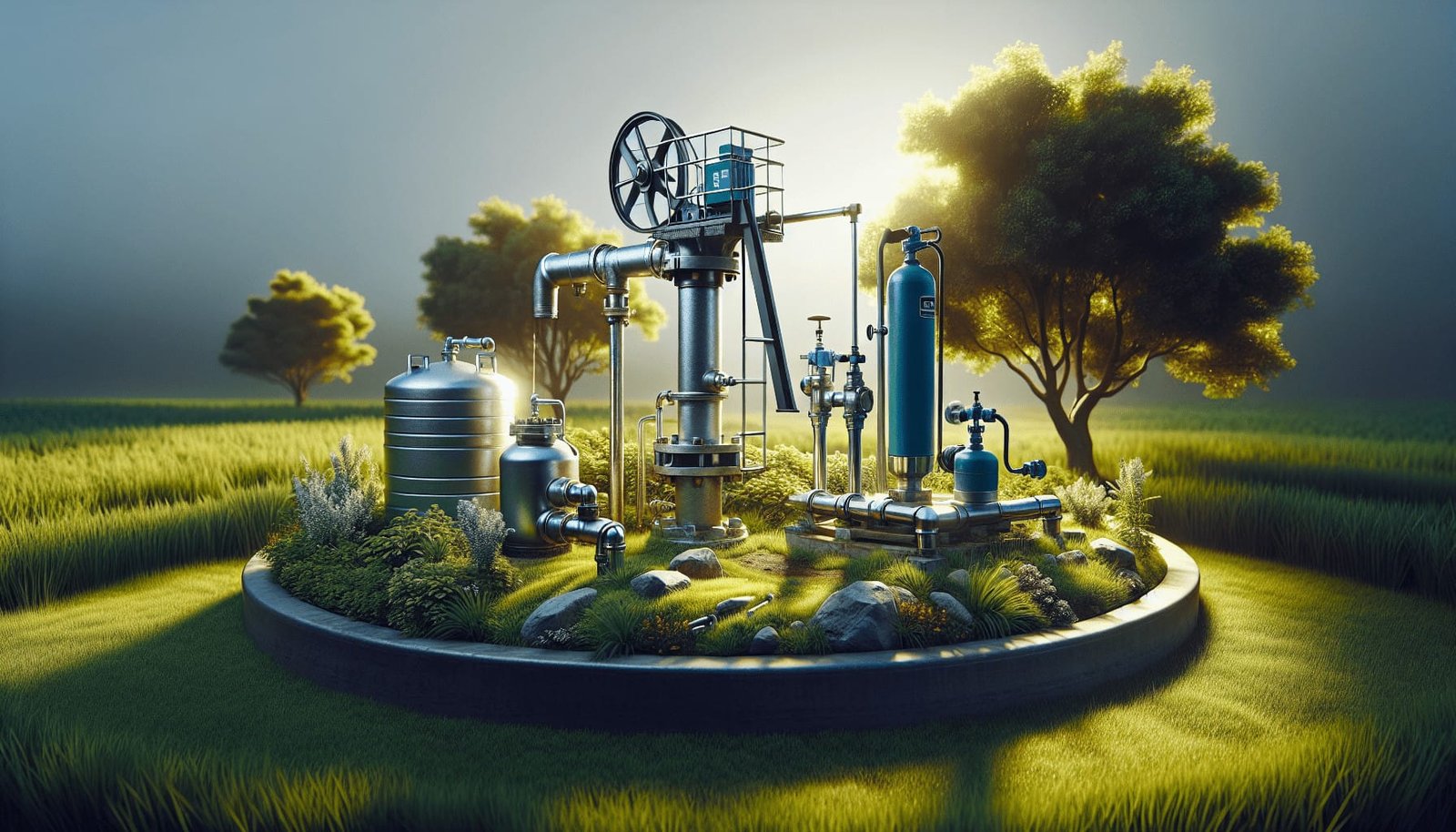Have you ever wondered about what components make up a well system? While it might seem like magic that water is neatly pumped into your home, the reality is a complex system working behind the scenes to ensure you have access to fresh, clean water every day. Understanding the intricacies of a well system can help you appreciate the sophisticated engineering involved and could even be useful if you ever encounter issues with your water supply.
Understanding Well Systems
Well systems are designed to draw water from underground aquifers and deliver it to your home or business effectively. They play a critical role, especially in rural areas where municipal water supply is unavailable. Each component of a well system works in harmony with the others to provide a reliable supply of water. Let’s look at each of these components to understand how they contribute to the entire system.
The Aquifer
At the heart of every well system is the aquifer, a natural underground layer of water-bearing rock or sediments. Aquifers are vitally important; without them, there would be no water to draw. They can be found at various depths, depending on the geography and geology of the area.
Your role in maintaining a healthy well system starts with aquifer protection—avoiding contamination is crucial. Practices such as managing agricultural runoff and safe disposal of chemicals can keep the aquifer clean and safe for use.
The Well Casing
The well casing is a tubular structure placed in the drilled well to maintain its openness and protect groundwater from contaminants. Its primary function is to keep the well from collapsing, ensuring that the water remains clean and accessible. It also prevents pollutants from seeping down into the water supply.
Understanding the casing’s role is important because it directly correlates with the quality of water you receive. Inspecting the casing regularly for any signs of damage can prevent potential issues such as contamination or well failure.
The Well Screen
Attached to the bottom of the well casing, the well screen acts as a filter. It allows water to pass through while keeping out sand, silt, clay, and gravel. This filtration is crucial to maintaining water clarity and preventing debris from entering the well system.
The well screen’s effectiveness can significantly impact your water quality. Therefore, understanding its condition and ensuring it remains free of blockages is vital. Regular professional cleaning and inspections will help maintain its performance.
The Grout
Grout is a material used to seal the space between the outside of the well casing and the drilled hole. It serves as an additional barrier to prevent contaminants from reaching the water supply. The grout’s integrity is crucial in maintaining the overall safety of the well system.
Knowing when the grout might need inspection or repairs can save you from future problems. Cracks or deterioration in the grout can lead to contamination, so it’s beneficial to have it checked by professionals regularly.

The Pump System
The pump system is perhaps one of the most critical components of a well system. It’s responsible for moving water from the well to the storage tank and eventually to your taps. Without it, gravity alone wouldn’t suffice, especially if you’re drawing water from deeper aquifers.
The Submersible Pump
The submersible pump is located within the well and operates underwater, making it very efficient for deep wells. These pumps are known for their reliability and longevity, often lasting up to 25 years with proper maintenance.
Your knowledge of the submersible pump can help you understand how it operates and when it might require servicing. Listening for any unusual noises or observing changes in water pressure can be early indicators of potential issues.
The Jet Pump
For wells that are not very deep, typically less than 25 feet, a jet pump might be used. This type of pump is located above ground and relies on atmospheric pressure to help lift water out of the well. Though effective for shallow wells, they can be less efficient than submersible pumps.
Keeping an eye on jet pump functionality and ensuring it’s primed and free of air can help avoid costly repairs or replacements. Simple steps like checking the pump’s pressure settings can ensure optimal performance.
The Pressure Tank
Working alongside the pump, the pressure tank helps maintain consistent water pressure in your plumbing system. It stores water under pressure, which allows for smoother delivery to your faucets and appliances. This component reduces the workload on the pump, extending its life.
Your role here is crucial as monitoring the pressure tank’s performance can prevent common problems such as water pressure drops or constant pump cycling. Routine maintenance, including checking the tank’s pressure and ensuring it’s free from leaks, is essential for continued reliability.

Distribution System
Once the water is drawn and pressurized, it needs to be distributed throughout your home. This involves a network of pipes and a pressure control system that ensures every tap has access to the right amount of water at the right pressure.
Plumbing and Pipes
The distribution system includes the plumbing and pipes that carry water from the well to different parts of your home. These pipes must be durable and suitable for use with potable water.
Understanding the types of plumbing used in your distribution system can aid you in recognizing potential issues before they become severe. Regular inspections and prompt attention to leaks or corrosion can prevent water loss and potential damage to your property.
Pressure Control Switch
This small yet crucial component manages the pump system by automatically turning the pump on and off to maintain the desired water pressure. It’s your pressure switch that prevents the pump from overworking and helps regulate the water pressure throughout your home.
Knowledge of how a pressure switch operates can help you troubleshoot minor issues. It might be as simple as adjusting settings to ensure consistent pressure. Regularly checking the pressure settings can aid in maintaining a balanced system.

Water Treatment Components
Depending on the quality of the source water, your well system may include water treatment components to ensure the water is safe and palatable.
Filtration Systems
Filtration is common in well systems to remove particles, sediment, and sometimes even bacteria from the water. There are various types of filtration systems ranging from basic sediment filters to sophisticated reverse osmosis systems.
Knowing the filtration system you have can help you maintain it properly. Regular filter changes and system checks are necessary to ensure effective removal of contaminants and maintain the water’s taste and safety.
Water Softeners
If your water tests high in minerals such as calcium and magnesium, a water softener might be used. These soften the water by exchanging these minerals with sodium or potassium ions, preventing scale buildup and making it more suitable for household use.
Your awareness of the water softening process can help you manage its upkeep, including adding salt or performing regeneration cycles as needed. Understanding the signs of hard water can alert you to potential softener malfunctions.
UV Purification Systems
UV purification uses ultraviolet light to disinfect water by killing bacteria and other pathogens without altering the taste or composition of the water. It is an effective chemical-free method of ensuring water safety.
For such systems, routine maintenance, such as replacing the UV lamp as recommended, is essential for efficacy. Recognizing the importance of UV purification in eliminating microorganisms will bolster your commitment to regular system checks.

Maintenance and Troubleshooting
Regular maintenance is crucial in extending the lifespan of well system components and ensuring continuous access to safe water. Common issues like reduced water flow or strange noises can often be resolved with basic troubleshooting steps.
Routine Inspections
Routine inspections can help catch potential issues before they escalate into major problems. Frequently checking elements such as the pump, pressure tank, and filtration systems can ensure they function efficiently.
The importance of documenting these inspections cannot be overstated. Keeping a record allows you to notice trends or recurring problems that could indicate a systemic issue needing professional attention.
Recognizing Common Problems
Understanding common problems, such as pressure drops, cloudy water, or air in the system, can guide you in taking swift corrective action. Awareness of these signs, as well as knowing when to call a professional, can save time and money.
Professional Assistance
While it is crucial to understand your well system, some issues require professional expertise. Hiring licensed professionals for tasks beyond basic maintenance, such as equipment replacement or complex repairs, ensures that your well system is in safe hands.
Being proactive in scheduling professional well checks and remaining informed about system developments can foster a harmonious relationship with your service providers, easing any concerns about water supply.

Conclusion
Creating a well system involves several intricate components, each playing a vital role in ensuring a steady supply of clean water to your home. By understanding these elements and embracing your role in their maintenance, you can ensure the enduring functionality and efficiency of your well system. Remember, your proactive approach can make all the difference in enjoying reliable and safe water for years to come.
